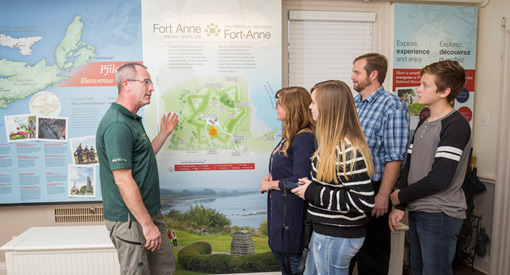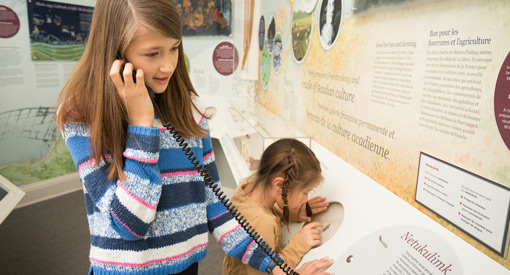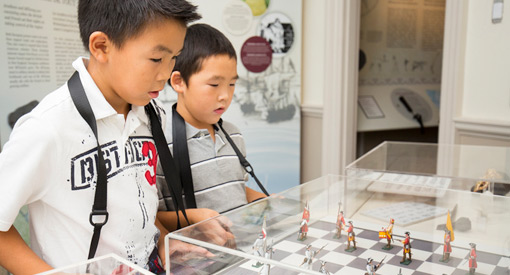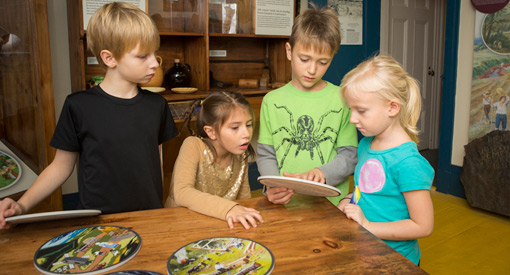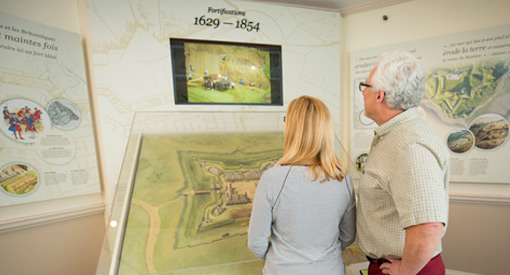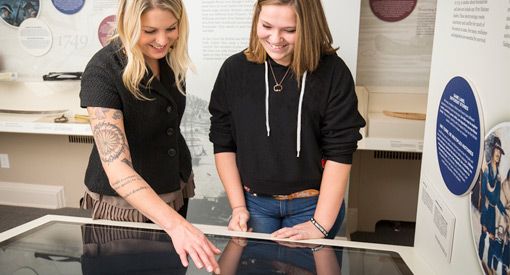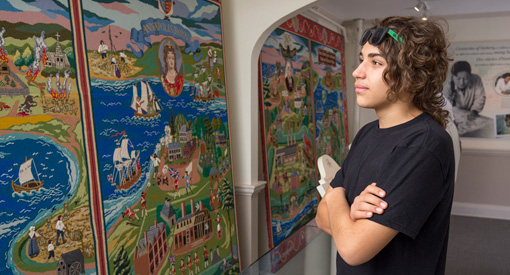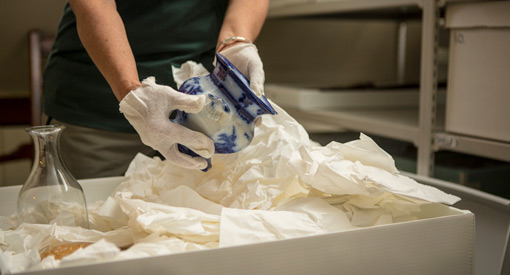
Officers’ Quarters Museum exhibits
Fort Anne National Historic Site
Immerse yourself in the history of the region inside the Officers’ Quarters Museum.
Use innovative technology to delve deeper into the social, cultural, and military stories of all peoples connected to this place, including Mi’kmaq, Scottish, French, British, Acadian, and African Nova Scotian.
Explore how the site has changed over time and what it means now to the people of Annapolis Royal and Canada.
The rooms
- Orientation Room
- Confluence Room
- Diplomacy Room
- Acadian Room
- Fortifications Room
- Transitions Room
- Tapestry Room
- Community Room
- Discovery Room
Room 1 – Orientation Room

The land on which Fort Anne now stands is part of the traditional homeland of the Mi’kmaq.
In recent centuries, a succession of Scottish, French, and English settlers clashed over this prize on the banks of Nova Scotia’s Annapolis River, often drawing the Mi’kmaq into their conflict. Fort Anne was the site of thirteen attacks, seven change of hands, and the ratification of the Treaty of Boston, commonly known as the Peace & Friendship Treaty of 1726.
Things to see and do:
- Check in at the entrance desk and learn about the many names for the fort and site, as well as connections to other nearby Parks Canada places.
- Pick up a site map at the Officers' Quarters Museum.
- Explore the small gift shop with merchandise and books about Mi’kmaq and Acadian history, the fort, and Annapolis Royal.
- Purchase a copy of these great booklets:
- Capitol, Colony and Bastion: The story of Fort Anne National Historic Site, Canada’s Oldest National Historic Site
- Stitches in Time: The Fort Anne Heritage Tapestry
Room 2 – Confluence Room
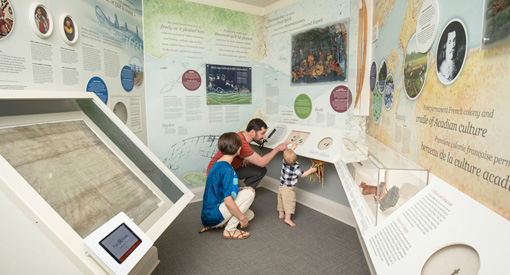
When European settlers chose destinations across Mi’kma’ki, they almost always chose to be close to Mi’kmaq communities. Discover more about Fort Anne as a place where Acadian and Mi’kmaq groups established peaceful relations.
Things to see and do:
- Use the audio wands to listen to stories about Mi’kmaq history and culture.
- See an original copy of the Nova Scotia Charter and use an interactive tablet to learn about its restoration.
- See artifacts from the 1629 Charles Fort, the first Scottish settlement on site.
Room 3 – Power and Diplomacy Room

While Acadians and Mi’kmaq were coexisting peacefully, British and French fought to control the region. Explore how the town of Port-Royal became a place of consequence.
Things to see and do:
- Dress up as a soldier of the “Troupes de la Marine” in a busy battleground with many important leaders and decision markers.
- Follow the wall map and learn more about the 13 attacks and 6 change-of-hands between British and French that took place on site.
Room 4 – Acadian Room
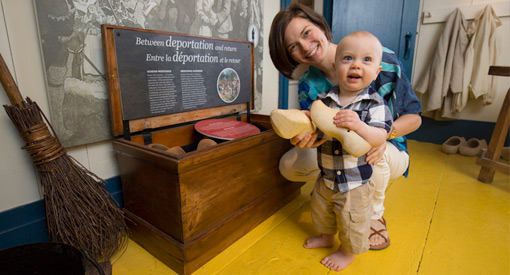
Acadian resilience and culture holds family, faith, community, and cooperation at its core. Acadian settlements in the late 1600s and early 1700s were based around marshland agriculture and dyke building.
Things to see and do:
- Learn about Acadian marshland agriculture and dyke building, the tragic story of the Deportation, and their return from exile.
- See a replica of the d’Aulnay stone found on this site, from the first French fort built around 1643.
- Dress up like an Acadian and try walking in “sabots”, the work boot of the day.
Room 5 – Fortifications Room
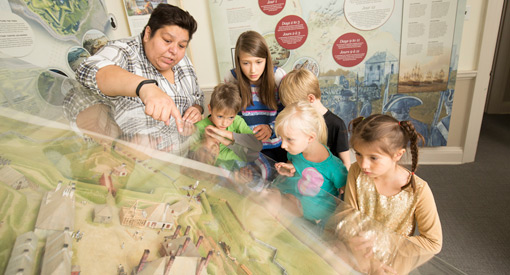
There were five successive forts at this site from 1629 to 1854. The Officers’ Quarters is the only remaining British building at the fort.
Things to see and do:
- See the actual key to Fort Anne.
- Watch an animation about the evolution of the five successive forts at this site.
- View a model of the fort set on a summer’s day in 1710. Explore all aspects of the fort in this small replication with the help of a tablet.
- Explore the Mi’kmaq presence, along with critical timing and critical decisions that were made at this site over many years.
- Follow details of the 12-day siege of the fort with a wall board and audio description.
- Dress up like a British soldier, and examine the original wall construction of 1797!
Room 6 – Transitions Room
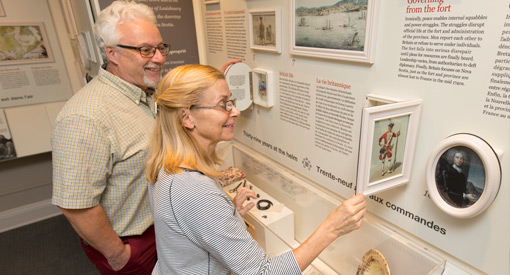
The British, Mi’kmaq, Acadians, and French all have stories to tell from 1710, when the Acadian capital of Port-Royal fell to British forces and was renamed Annapolis Royal.
Things to see and do:
- Listen to their voices and explore the Timeline Wall.
- Explore the interactive Treaties table to learn about the Covenant Chain of Treaties between the British Crown and Atlantic First Nations. The 1726 Treaty was signed here at Fort Anne!
Room 7 – Tapestry Room

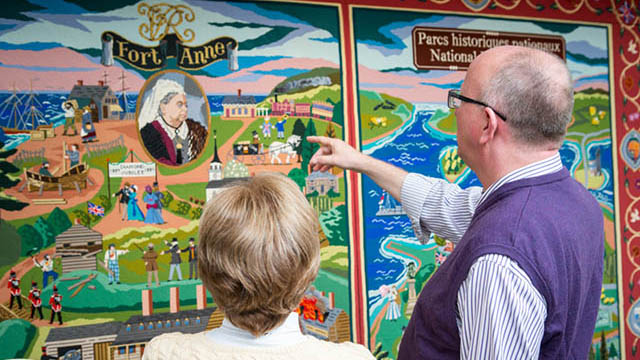
The Tapestry room is a remarkable community effort to weave together stories of Annapolis Royal. The stories are presented through the artwork “Our People” by Mi’kmaw artist Loretta Gould and The Fort Anne Heritage Tapestry.
"Our People" depicts Mi'kmaw history, culture, and presence in this region since time immemorial, through the four seasons. More information about "Our People"
The Fort Anne Heritage Tapestry has four panels, each depicting a century of European settlement. The events depicted unfolded in a place that has been of great significance to the Mi’kmaq over thousands of years.
Things to see and do:
- Explore the imagery in the painting.
- Use the tablet to view the creation of the tapestry or browse the flip books to read about the vignettes.
- Use the binoculars to get a close up look of the stitches.
Room 8 – Community Room
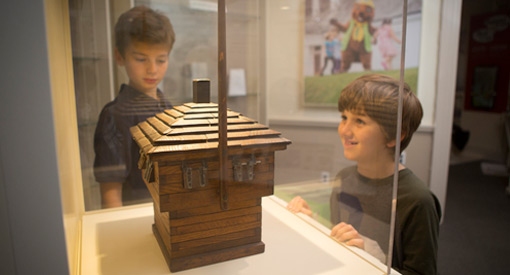
The fort transitioned from a military site, to a romantic ruin, to Canada’s first National Historic Site. The destruction of the blockhouse was the catalyst for the site’s preservation. Follow the path taken for safeguarding the past and future.
Things to see and do:
- See new artifacts on display each season.
Room 9 – Discovery Room
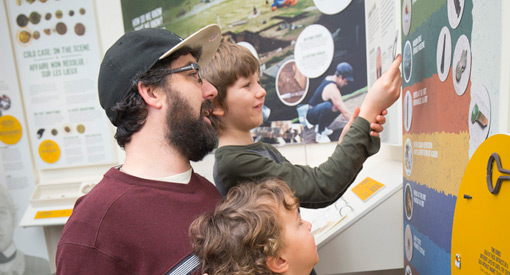
So much of what we know about Fort Anne is thanks to detective work done by archaeologists and historians.
Things to see and do:
- Test your investigative skills on our cold case burial. Can you match the artifact to its time period? Can you uncover the identity of our cold case burial? Use historical tools provided to investigate this curious case.
Image gallery
- Date modified :
